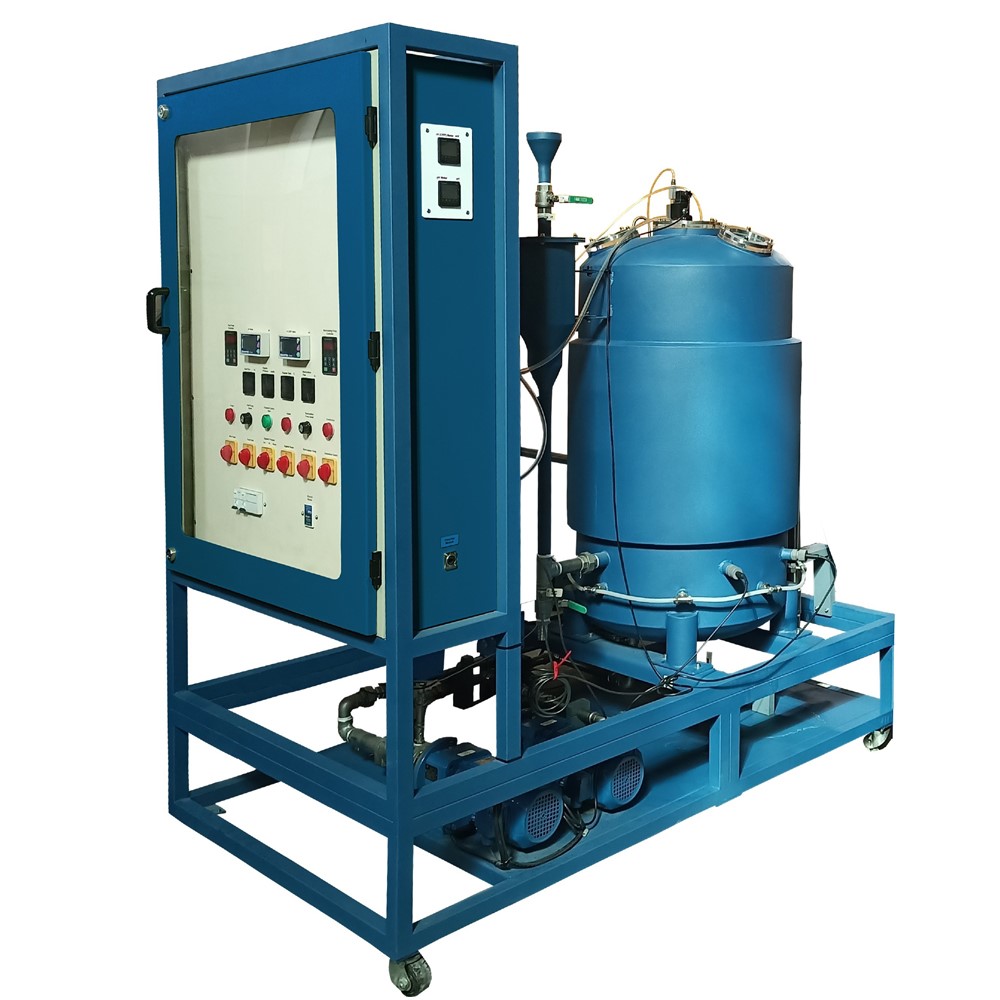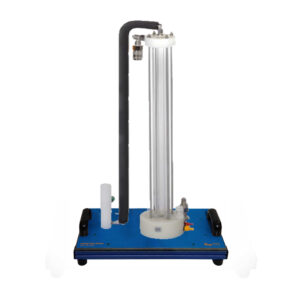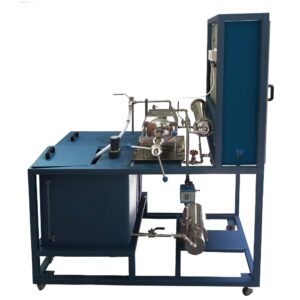Organic materials degrade anaerobically when there is no oxygen present. The organic materials are broken down because the anaerobic microbes feed on them. This generates biogas, which is mostly composed of methane (60%) and carbon dioxide (35%). The raw water is first moved into a stirred tank by a feed pump. The acidity of the organic materials dissolved in the raw water occurs in this tank. Long-chain organic compounds are changed into short-chain organic compounds in this situation by anaerobic microbes. The biomass that is released from the stirred tank is separated from the water in a secondary clarifier. The separated biomass can be pumped back into the stirring tank using a recirculation pump. Raw water that has undergone this pretreatment flows from the secondary clarifier to a UASB reactor (UASB: Up-flow Anaerobic Sludge Blanket). This is where the anaerobic degradation process ends. Special bacteria transform the previously generated short-chain compounds into biogas (methane and carbon dioxide).
The UASB reactor has a bottom-to-top flow pattern. The UASB reactor has a separation system at the top. By doing this, the produced gas and the cleaned water are separated. Additionally, it makes sure the biomass stays inside the reactor. The gas can either be stored or released outside. The reactor’s top end is where the treated water leaves and is collected in a tank. To adjust the flow velocity in the UASB reactor the treated water can be recirculated. It is possible to regulate the temperatures in the stirred tank and the UASB reactor. The pH and rH values in the stirred tank are measured.




